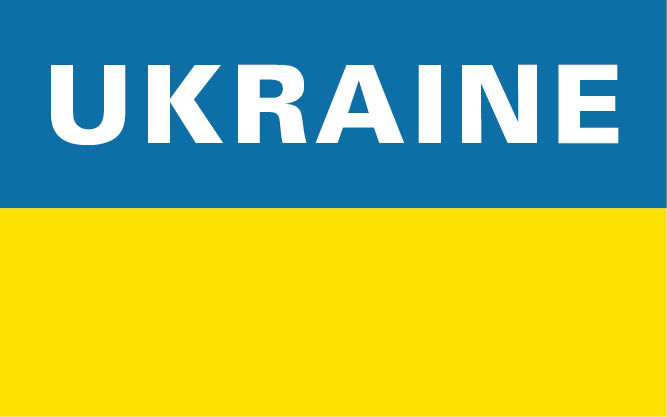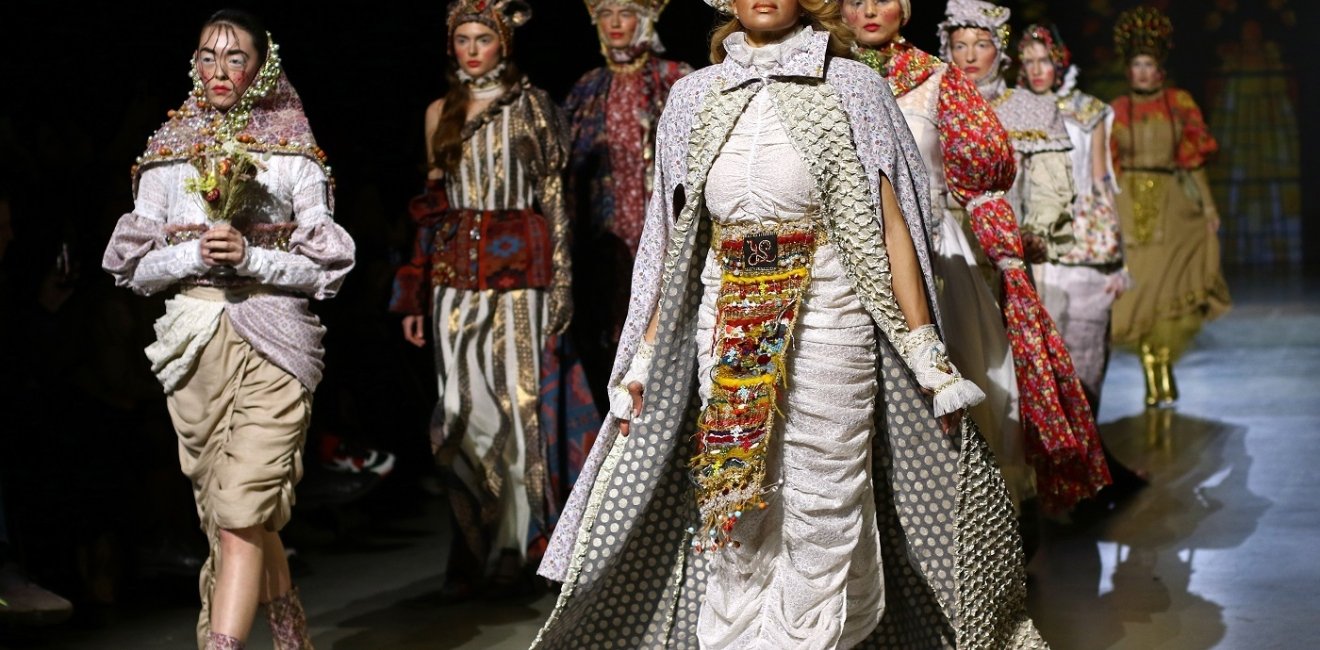
A blog of the Kennan Institute
Zurich high society celebrated Ukrainian fashion on the last day of February this year. Ukrainian designers took over the runways at Zurich’s historic Roccoco Zunfthaus (Guildhouse) zur Meisen, a building that dates from the mid-18th century, on a site occupied since the 13th century. Now home to the Swiss National Museum’s porcelain collection, the guild house is considered one of the most beautiful and historically significant buildings in Zurich’s medieval Lindenhof quarter.
The gathering of moneyed Swiss fashion mavens pursued two goals. The first was to collect funds for various charity projects in Ukraine; the second was to enable contemporary Ukrainian designers to show off their designs to European fashion industry kingpins. More than 125 Ukrainian fashion industry notables—designers, image makers, makeup artists, hairdressers, and models—displayed their products to a roomful of potential clients.
Zurich’s Ukrainian Fashion Day carried the same message. The first segment the show featured traditional Ukrainian clothing, representing various regions and cultural traditions. The museum-quality embroidered costumes, dresses, blouses, and shirts were a teaser for the show’s second, a turn down the runway featuring contemporary, high fashion. A third featuring a children’s collection followed to point towards the future.
Ukrainian jazz and classical musicians accompanied the models’ turns on the runway, as well as the Ukrainian choir “Perepiv.” Auctioneers sold off paintings and jewelry by Ukrainian masters to raise additional funds. The World Ukraine Cooperation Society, the Swiss Ukrainian Society, and Ukrainian women who found shelter in Switzerland organized the show.
Harper’s Bazaar promoted the Ukrainian fashion industry since the war began, pointing its readers to Ukrainian designers whose work deserves a following. Some of these products relate directly to the current war. Designer Lilia Poustovit, for example, created a special silk scarf to support the people of Ukraine featuring floral motifs and the poetry of Lina Kostenko. As Poustovit told Harper’s Bazaar, “Rethinking cultural heritage has always been an important component of the Poustovit brand identity, and now its study is gaining new meaning for every Ukrainian.” As the magazine explained, Ukraine’s rich past and resilient presence are an inexhaustible source of inspiration and a solid foundation for the future.
Similarly, Vogue urged its readers to support Ukraine’s fashion industry shortly after the Russian invasion in February 2022 through a feature article showcasing Zirochka Ukraine, Ksenia and Anton Schneider, Ivan Frolov, and others. The piece noted that young Ukrainian fashion professionals were working around the world for numerous global brands. The 2010s was a decade, Vogue noted, when the Ukrainian fashion industry came of age.
Featured designer Poustovit has been a leading light of Ukraine’s post-independence presence in the world of fashion, and an exemplar of how Ukrainian designers have been successfully making their way in the world of fashion. Born in the provincial city of Vinnytsia in 1968, she enrolled in the Kiev Technological Institute of Light Industry at the Faculty of Garment Production just as Gorbachev was coming to power. She quickly became the featured artist of a garment factory in Moldova before heading home following independence.
Back in Kyiv, Poustovit began working in the Eksta Fashion Center and, by 1994, was showing her collections in France. She secured her own French trademark before the end of the decade. Her designs, bringing together contemporary and ethnic motifs with a comfortable edginess and youthful elegance, were featured regularly in Vogue and other influential publications.
Zurich’s Ukrainian Fashion Day highlighted how Poustovit is but one of several Ukrainian fashion professionals who have been making their mark in the global fashion marketplace in recent years. Looking beyond the connections between traditional and contemporary Ukrainian design, the Zurich organizers drew attention to the strong ties between Ukrainian and European fashion. The war has not prompted Ukrainian creators to join the West. Rather, it has prompted Western fashion to recognize that Ukrainians have been part of their world for a long time.
The opinions expressed in this article are those solely of the author and do not reflect the views of the Kennan Institute.
Author

Former Wilson Center Vice President for Programs (2014-2017); Director of the Comparative Urban Studies Program/Urban Sustainability Laboratory (1992-2017); Director of the Kennan Institute for Advanced Russian Studies (1989-2012) and Director of the Program on Global Sustainability and Resilience (2012-2014)

Kennan Institute
After more than 50 years as a vital part of the Wilson Center legacy, the Kennan Institute has become an independent think tank. You can find the current website for the Kennan Institute at kennaninstitute.org. Please look for future announcements about partnership activities between the Wilson Center and the Kennan Institute at Wilson Center Press Room. The Kennan Institute is the premier US center for advanced research on Eurasia and the oldest and largest regional program at the Woodrow Wilson International Center for Scholars. The Kennan Institute is committed to improving American understanding of Russia, Ukraine, Central Asia, the South Caucasus, and the surrounding region through research and exchange. Read more

Explore More in Focus Ukraine
Browse Focus Ukraine
Talking to the Dead to Heal the Living

Ukrainian Issue in Polish Elections




